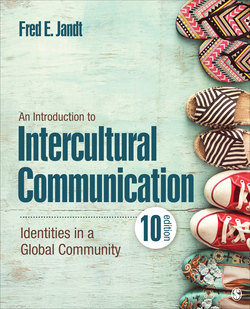Читать книгу An Introduction to Intercultural Communication - Fred E. Jandt - Страница 55
Summary
ОглавлениеOur culture provides regulation for life and provides individual identities. Six forms of regulators of human life and identity are religion, nation, class, gender, race, and civilization. Today, national identity has become synonymous with cultural identity. The term culture refers to the totality of a large group’s thoughts, behaviors, and values that are socially transmitted as well as to members who consciously identify with the group.
Twentieth-century scientists have found no single race-defining gene. The sociohistorical concept of defining race explains that racial categories have varied over time and between cultures. Worldwide, skin color alone does not define race. Scholars from a variety of disciplines have argued that White people in countries such as the United States and South Africa are observed by other groups to be distinct, superior, and unapproachable, whereas Whites themselves are relatively unaware of their racial identity compared to people of color.
The term subculture refers to a group that exists within a culture, usually based on social class, ethnicity, or geographic region. As the prefix sub can mean “less than,” some scholars prefer the term co-culture to indicate that no one culture is inherently superior to other coexisting cultures. Finally, the term subgroup refers to a group that provides members with a relatively complete set of values and patterns of behavior and in many ways poses similar communication problems as cultures. To avoid negative connotations with these words, the terms microculture and community are becoming more commonly used. Recognizing the effect labeling can have on individuals’ identities, this text recommends and uses only the terms culture and community.
A Confucian perspective on communication would define it as an infinite interpretive process in which all parties are searching to develop and maintain a social relationship. A Western perspective would define it as a process involving a speaker, the speech act, an audience, and a purpose. Components of communication can include source, encoding, message, channel, noise, receiver, decoding, receiver response, feedback, and context.
One component of the communication process is the channel or media by which the encoded message is transmitted. Today’s new media use reflects significant aspects of culture. For example, people in the United States are more likely to send and read text messages in public social settings like restaurants, shops, and movie theaters; Indians text when they are with family members or boyfriends and girlfriends. And Western and Chinese Internet news sites have different layouts, which is related to culturally influenced perceptions of information storage and display.
